-
Posts
437 -
Joined
-
Days Won
29
Content Type
Profiles
Forums
Downloads
Gallery
Posts posted by X___
-
-
I have been using Parallels for a long time. It works but it also hurts (more on this below). As far as subscription vs none, there used to be limitations to the one-of version in terms of number of cores and max RAM (this might have changed, but I don't think so). This is a problem when you have a multicore machine and you end up limited to only a few. There are some additional perks coming with the subscription version (including updates, and a la LabVIEW, the corresponding bug fixes).
Be warned that their support is nowhere close to NI's, which is a problem when something fails badly (and it will, potentially). Thus, do not upgrade to the newest version until after careful monitoring of their forums, as my experience has been that it can sometimes completely fail and corrupt your VM.
Which brings me to the most important advice (independently of the upgrade step): do not save critical data - e.g. VIs- as part of you VM (unless you want to backup a multi GB blob every day as part of your Time Machine routing - the VM comes as a humongous file that you will probably want to exclude from your backup routine and only save every now and then - typically before an upgrade), but instead, take advantage of the ability to share data between your VM and the Mac. This way, if your VM becomes corrupted, it's just a matter of getting an old copy of it (with only the system and apps, which typically don't change that often or can be easily updated if needed). Your data files will have been on the mac side of things all along and unaffected by the Parallels fiasco. It has happened to me several times.
As usual, YMMV.
As a note, I am not sure this is the best time to switch to a Mac, with the Apple silicon transition, which will at best emulate Intel CPUs, and as far as I know, Parallels adjustment to this is still in the work. I am personally switching to a Thinkpad... and in the long term, Python 🙂
-
A word of caution (seriously): before you send people in space on a device simulated/tested with LabVIEW, keep in mind that a non-negligible fraction (I am not saying a large fraction, but one bug can be enough) of its algorithms/numerical codes are buggy and since they are closed source (for the most part), the only way to figure out is to run into inconsistencies or unexpected results. This takes a OCD scientific mind to discover, the hard way. Especially in the "uncommon" regimes, those which Dr Murphy likes to invoke at the worst time...
As users, we've done our best to let NI know, but at best it has taken years for actual bugs to be fixed, when they have been fixed... Maybe time to check those X_Bug_Report tagged posts on forums.ni.com...
Have fun.
-
Gotcha. That is problematic.
-
NI recommends to force recompile (mass compile) after each update.
-
On 9/8/2020 at 8:45 AM, Stagg54 said:
So we had a discussion during Virtual Coffee about malicious packages and vetting.
How do we verify that code is not malicious?
What might flag something as malicious?
We can use VI analyzer to check for certain things such as:
- PW protected VIs
- Removed BDs
- Call Library Node
- .NET nodes
- Network nodes (TCP, UDP, etc)
- File I/O nodes
- Shell commands
- Run on open
- Subvis with no icon or hidden under other objects
LabVIEW itself would be highly suspicious, according to these criteria. But wait...
-
What's the idea? It doesn't know which package I have installed for what version and therefore cannot tell me whether a new version is available and I should check out. 19 pages of listing instead of the compact window I can easily filter and check out at a glance...
-
Once the HTML is generated with the provided VIs on the source computer (json files, PNGs and some txt description files plus the boilerplate JS installed with FINALE), that HTML hierarchy can be uploaded on a website (e.g Github). The only thing that is needed is a http server (which is launched by the command http://127.0.0.1:8081 on a local computer in the current FINALE distribution) serving the webpages and running the different js scripts. That could be done by cloud servers at minimal cost.
This could be provided together with the source code in repositories for those who don't have access to LV.
While LV is not a text language, a well-designed LV code should be roughly decipherable by a non LV expert, especially when implementing an algorithm (UI and code mechanics is another matter). This would go a long ways toward establishing LV as an acceptable programming language for scientific applications. Currently it is not, because most scientists using Matlab, python, C, etc. can't even look at the code.
Here is an example of how this looks like:


Note that vi.lib and other pre-installed VIs are not accessible and I don't see the conpane of the other VIs...
-
That's working well enough.
Now we need to convince github and other repository cloud storage solutions to run this on their servers...
-
The binary-no preview nature of LabVIEW code is obviously a problem.
-
Note that the discussion was not about whether or not LabVIEW is on its way to dominate the landscape, but where it is discussed (both are certainly related).
-
On 8/1/2020 at 5:20 AM, Rolf Kalbermatter said:
Interesting theory. Except that I don't think LabVIEW ever got below 35 in that list! 😀
Are you seeing things between the lines? LV is not present among the first 50 listed...
In case that helps shedding some more light on reality, here is yet another recent list essentially saying that LV is nowhere to be seen on Github or Stack Overflow:
https://redmonk.com/sogrady/2020/07/27/language-rankings-6-20/
and I am not talking about the list itself, but the graph shown here:

doesn't list LV, as far as I can tell.
Now I am sure that if you limited this kind of analysis to NI's website or LAVAG, LV would hit top of the list in both cases...
-
- Popular Post
- Popular Post
On 4/26/2016 at 4:48 PM, CopperD said:I don't know where else to hang out at. The NI forms feel uninviting.
According to the April 2016 TIOBE index LabVIEW is in slot 37 just under RPG and up from 42 in July 2015.
https://www.tiobe.com/tiobe-index/
LabVIEW dropped below 50... Might it be that its rank follows its average user age?
-
 3
3
-
2 hours ago, Neil Pate said:
Unfortunately I really need the TLS feature of TCP/IP connections so am going to have to lump it. I agree though 2020 feels like one of the "skip" releases.
That's the only thing I had noticed... as overdue (although of no use to me).
-
That looks insidious indeed. It definitely doesn't work this way in 2019 SP1. This is the kind of mental note (close LV and restart to clear up memory) I would certainly forget every now and then.
I am refraining from upgrading without pressing reasons, since chances are I will lose access to support for old NI hardware I haven't replaced yet (by non-NI ones, of course!). I realized too late I should have stuck to 2018 SP1 for hardware reasons (and as I described recently in the thread you linked to, because of a newly introduced project explorer bug among others).
2020 seems to be one of those years we will try our best to forget about ASAP...
-
CAR# 1096546 was submitted for this bug
-
Parallels has a few bugs up its sleeves too, so I am willing to lean toward that conclusion too considering that no one seems to have observed this.
Is anyone using Parallels Desktop in "Coherence" mode and observing this phenomenon? There is no Windows' real estate per se in this mode, each Windows app's window appears as a regular macOS one (with the Windows style though), so I can't really imagine that the OSes could be mislocating the cursor... but this is all beyond my technical knowledge to really ponder.
Thanks for looking into it though.
-
9 hours ago, Neil Pate said:
How frequently? I must say I cannot recall seeing this, certainly not regularly enough for it to be a nuisance. Can you post a video?
Frequently enough that in my drive to make this world a better place, I decided this was a worthy campaign to galvanize the crowds for.
-
9 hours ago, LogMAN said:
If Windows scaling is enabled, try disabling it. I had strange behavior because of that in the past.
No scaling enabled that I know of. I am using a VM in Parallels Desktop running on a MBP, but I would be surprised it is the root cause.
-
Here is the video illustrating the symptoms.
Of course the demo effect wants that the first time I try to drop the subVI, the cursor looks fine (I had just verified on a brand new VI that the symptom appeared right away, and after I went through the recording hoops, I had to "work" for it to show up), but a brief excursion with the cursor over the project (from which the subVI came, so indeed I could not drop it again in there) was enough for the cursor to turn back to the "forbidden" icon.
I am not sure that is very visible in the video, but there is a little bit of a "stuttering" and you can usually very briefly see the arrow+ cursor alternating with the forbidden icon.
The bottomline though is that I cannot drop the subVI in most of the virgin diagram and have to actively search for allowed drop zone.
I have come to get used to it now, but it is definitely getting old and a productivity hog.
-
The title is made up, but explains what I have been experiencing for years, hoping that it would be fixed in the next version, but it never has, so I am starting to suspect nobody is caring or possibly maybe nobody even noticed it?
Anyway, the symptoms are:
when I drag a VI (from either a palette or from the icon of an open VI) into a target VI's diagram, I am frequently encountering this odd and annoying 🚫 symbol where my cursor is (it's not red and it is slanted the other way, but this is the closest emoji to the real thing I could find), instead of the "androgynous" cursor (a mix of ♀️and ♂️) which tells me that I am going to copy that object where the cursor is.
I would move the cursor around, seeing a 🚫 wherever I go, until I would fleetingly grasp a cursor with the + index (the "androgynous" cursor) over some random location, and then, painstakingly try to go back to that region to find the sweet spot (pixel really) where I am able to drop the VI. Of course, once dropped on the diagram I can move the VI anywhere where I was forbidden to drop it during my initial attempts.
That's got to be the most annoying bug in a graphical programming environment ever...
Am I the only one to experience this?
I am using 2019 SP1 64 bit, but that has been around for several versions already.
-
I suggest you split the thread, as it may become confusing if everyone refers to a different bug. Mine has been submitted and I will report the CAR when I get one.
-
...and graphical programming (sorta)!
With more funders will come PoE (page here) which would be cool.
Where I learned about the Myriad-X vision processing unit (which the new green deal company, BTW, doesn't seem to know about - or the search box is broken?): https://www.intel.com/content/www/us/en/products/processors/movidius-vpu/movidius-myriad-x.html using DL (the page also refers to additional AI-related products).
-
I used to have a reputation to find bugs that nobody noticed...
-
I am using LabVIEW 2019 SP1 in Windows.
I am trying to reorganize dependent VIs into virtual folders in a project. I have noticed that it is now impossible for me to drag an object in a non visible part of the project. It used to be an exercise in frustration management in the past (with a single pixel-wide sweet spot triggering a painfully slow scrolling of the project explorer objects' list) but it seems to have been solved brilliantly by completely removing the ability to drag and drop objects in non visible parts of the project...
To clarify what I mean, here is a dummy project with empty VIs:

If I now reduce the size of the window such as to hide the virtual folder and show the object I want to move into it:

I can't trigger the window to scroll anymore (all I get is the "forbidden" icon instead of the mouse cursor, which tells me I am trying to do something that is forbidden: it is not. I can drag the object in the virtual folder if it is visible).
Of course in this dummy example, I could expand the window to reveal the VF. But the point is that in typical situations, I have a (large) number of dependent VIs (or other objects) I want to reorganize in virtual folders, and my screen is not large enough to show both VF and objects.
Now a workaround is to Add... (contextual dialog) each file into the virtual folder by browsing the File Explorer, but this defeats the purpose of the Project Explorer, which "neatly" groups files located in many different places into a single flat list.
Now that I think of it, it might all be a clever plan to force us to abandon LV GC to move on to NXG... although I suspect it might not be easier to do there or completely different and counterintuitive.
PS: I am using a VM in Parallels Desktop, so it could very well be a Parallels bug, but I wanted to check with the community whether I am missing something obvious.

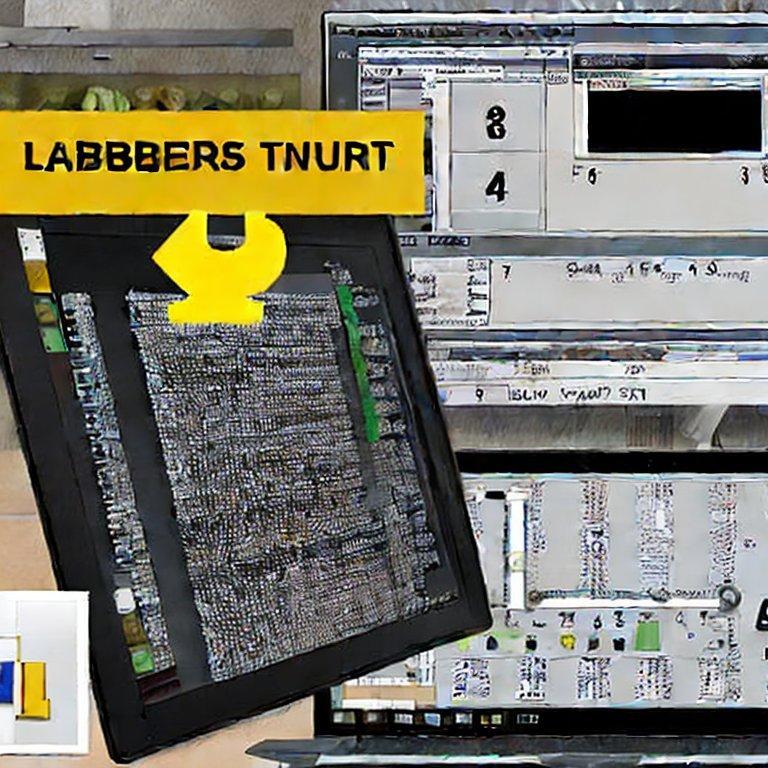

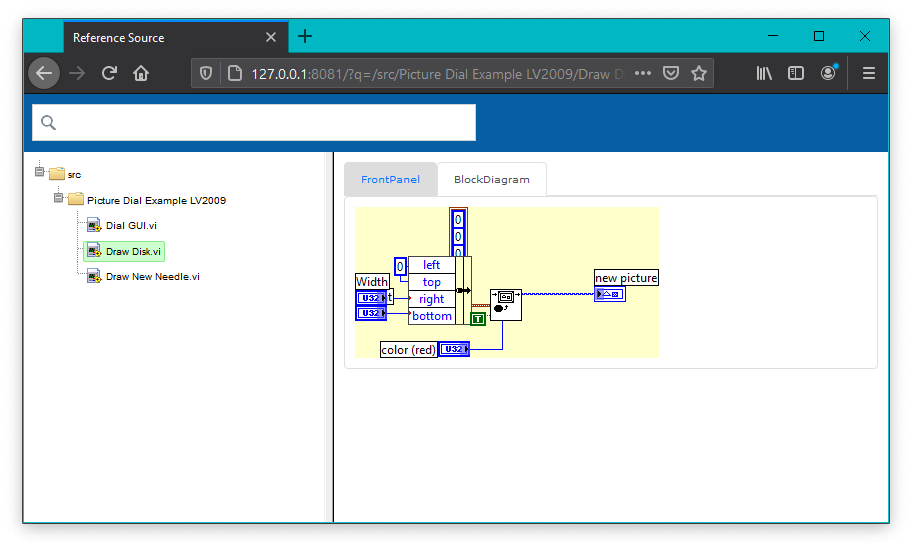

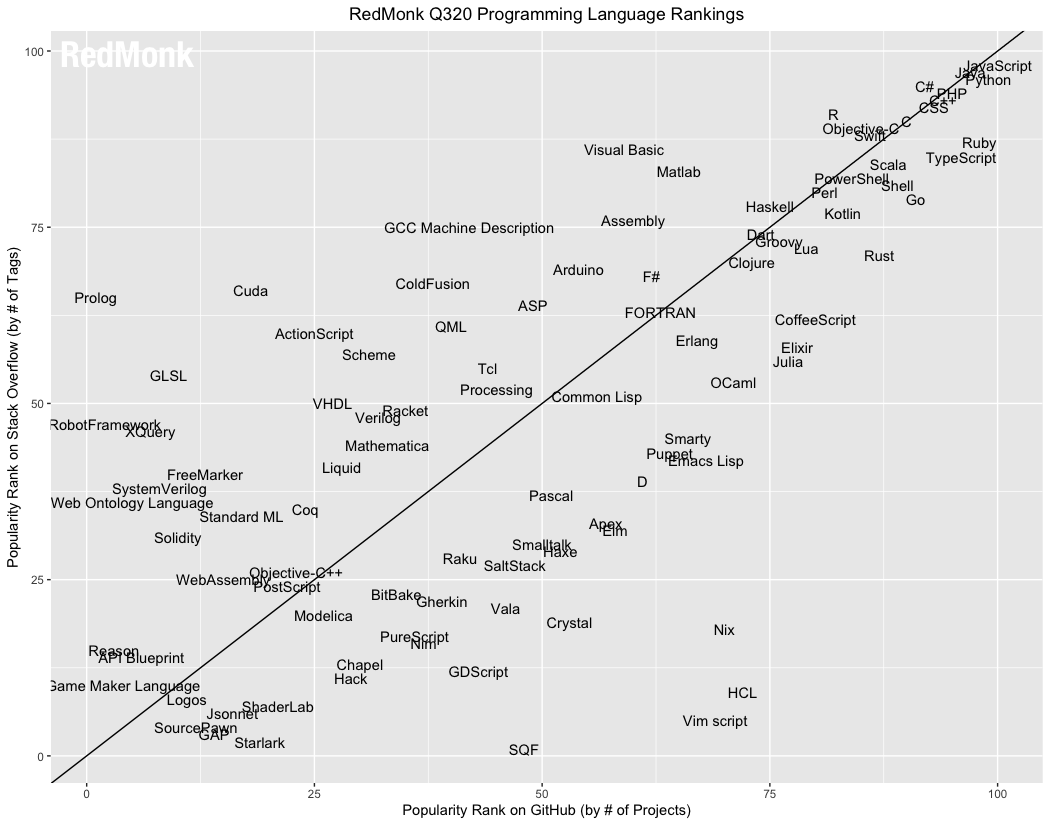
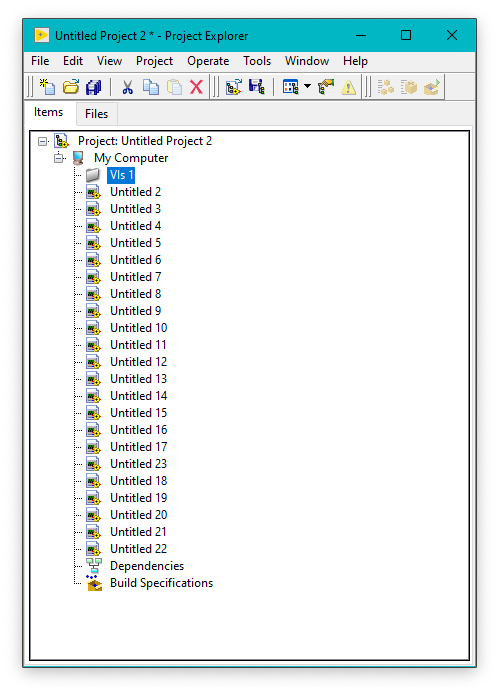
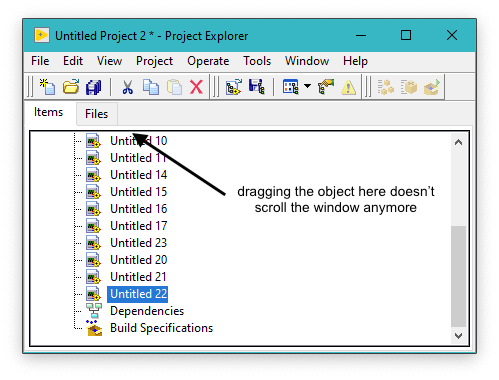
NI abandons future LabVIEW NXG development
in Announcements
Posted
Can't say that the rationale for the decision is put particularly convincingly... We'll have to wait for the dust to settle to really figure out what this corporate double-speak means. Do they even know themselves?